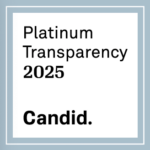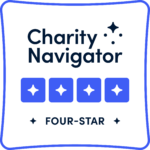When 29-year-old Carly Bastiansen was diagnosed in January 2016 with advanced pancreatic cancer, doctors told her a clinical trial was her best shot at slowing the notoriously quick-killing and hard-to-treat disease. She found one that appeared promising and went through the screening process. But the trial would not accept her.
“Participating in a clinical trial is really my only chance at living longer,” Bastiansen, a children’s librarian in Baltimore, said this fall as she was growing weaker. “To have had that option taken off the table was devastating.”
Bastiansen was ruled out of the trial because she did not meet its eligibility criteria, which include many characteristics — for example, age and the type and stage of cancer — that all trial participants must possess. Lab tests showed that her bilirubin, a compound in the blood that is predictive of liver function, fell just outside the normal range, raising the red flag that barred her enrollment.
She refused to give up and not long ago took a leave from work to devote all of her energy to finding a trial that would enroll her. “The researcher heading up the second trial I applied to said I was ‘too sick’ for his trial,” Bastiansen said.
Her unsuccessful search — six trials would eventually reject her — help illuminate a debate over the eligibility criteria that are part of every clinical trial. Many doctors and researchers argue that the criteria are too narrow and should be expanded to include more patients who have exhausted standard treatment options or who, like Bastiansen, never had any to begin with.
Any resolution of that debate, however, will come too late for Bastiansen. She died in November.
Clinical trials test whether a treatment is safe and effective, a prerequisite for Food and Drug Administration approval. Eligibility criteria are typically written by the trial’s sponsor — usually a pharmaceutical or biotech company — or the trial’s investigators, and they serve two purposes: They protect study participants, particularly those thought to be at greater risk, from experiencing unnecessary harm. They also ensure that participants are similar enough that any changes they experience during the trials are caused only by the drug under investigation.
“Otherwise it would be impossible to know, for example, whether a patient experienced a cardiac event due to a side effect of the drug under study or due to an underlying health condition,” said David Gerber, a lung cancer specialist at the University of Texas Southwestern’s Simmons Cancer Center.
Despite the essential role of eligibility criteria in clinical trials, many oncologists believe that such guidelines are overly restrictive, resulting in too many patients being barred from potentially life-extending treatments and helping to keep the nation’s cancer clinical trials participation rate hovering at 3 percent.
“Everyone thinks it’s time to take a hard look at eligibility criteria, especially doctors who have to look their patients in the eye, after telling them about an exciting new trial, and explain to them that they aren’t eligible to participate,” said Mikkael Sekeres, director of the leukemia program at the Cleveland Clinic’s Taussig Cancer Institute.
But that has proved easier said than done. While Sekeres advocates for “more rational eligibility criteria,” he also says that defining a study’s eligibility criteria is an “inherently complicated and high-stakes process.”
Eligibility criteria must be broad enough to enroll patients into the trial quickly. At the same time, they must be narrow enough to rule out patients with characteristics that could skew the effect of the drug under study.
“Enrolling patients with certain illness could lead to the erroneous conclusion that a flare-up of the illness is caused by the drug. This could result in a study being stopped cold or the development of that drug being killed altogether,” Sekeres said.
“Historically, access to clinical trials has been limited to relatively few patients, with several populations categorically excluded,” said Bruce Johnson, a lung cancer specialist at Dana-Farber Cancer Institute and president of the American Society of Clinical Oncology (ASCO), a professional organization representing oncologists.
HIV-positive people, for whom cancer is the leading cause of death, are almost always ruled out of cancer clinical trials, even when their disease is stable and they are in good health. So, too, are people younger than 18, who are routinely excluded from adult cancer clinical trials, even though adolescents metabolize drugs just as adults do. Also ineligible are people with a history of cancer who were treated years or decades earlier and have minimal risk of relapse — a rule that disproportionately excludes seniors.
“There’s a joke that you have to be able to run a marathon before you can participate in a clinical trial,” said Rafat Abonour, a multiple myeloma specialist at the Indiana University Simon Cancer Center.
He said study sponsors and investigators often seek to enroll “relatively healthy cancer patients” into trials because “they’re most likely to do well on the trial.”
Limiting clinical trial enrollment not only affects those patients who were turned away, it also leads to results that cannot be generalized to more-typical cancer patients who, ultimately, are the ones for whom the drug would be prescribed.
“We don’t really know how tolerable or effective a drug in clinical trials will be in the patients we see day-to-day because they so often have disease complications and other health problems,” Abonour said. “I am usually disappointed to find that drugs are less effective and have more side effects than reported in the studies.”
Despite these concerns, eligibility criteria appear to be increasing in both number and complexity, with one recent study published in the Journal of Thoracic Oncology showing a 50 percent growth over the past 30 years in the number of eligibility criteria for lung cancer studies.
Gerber, the lead author of the study, says the increase reflects the general practice of adding new criteria that are relevant to contemporary treatments, such as immunotherapies and targeted therapies, without removing criteria that are not pertinent to these drugs.
“Considerations that were relevant to older treatments — such as strict minimum required blood counts for conventional chemotherapy — don’t necessarily apply to newer treatments under study, yet often remain on exclusion lists,” Gerber said.
He says eligibility criteria are often “included out of habit” or duplicated from previous clinical trial protocols, rather than carefully considering how the drug might affect certain populations.
Allen Lee, 32, whose lung cancer had metastasized to the brain at the time of his diagnosis in March 2015, is eager to participate in clinical trials but has yet to qualify for one because of his untreated brain metastases. Although he had two large clusters of cancer cells surgically removed, he opted not to treat the remaining five lesions with whole brain radiation, which can cause severe cognitive decline while offering no improvement to overall survival.
“For a shot at getting into a clinical trial, which may or may not have helped me, I basically had to be willing to risk brain damage,” said Lee, a software engineer in Boston.
It’s a common quandary for people with brain metastases, even once they have been treated. Each year, about 70,000 Americans with cancer learn they have brain metastases, including up to 40 percent of lung cancer patients. As many as half of all women with metastatic HER2-positive or triple-negative breast cancer will develop one or more brain metastases as their disease progresses.
Brain metastases are one of several eligibility criteria that ASCO and the advocacy group Friends of Cancer Research say must be revamped. Last month, they issued a joint statement calling for a broadening of five eligibility criteria — minimum age requirements for trial enrollment, HIV/AIDS status, brain metastases, organ dysfunction and a history of cancer or two concurrent cancer diagnoses — that they identified as being most likely to restrict a patient’s participation in a trial but least likely to affect their safety.
“This will not only enable more patients to access novel cancer treatments through clinical trials, but will improve our understanding of how to treat the diverse patients we see in everyday clinical practice,” Johnson said.
The statement includes specific recommendations to safely relax certain eligibility criteria for cancer clinical trials. Under those recommendations, the criteria that banned Bastiansen and Lee should be revisited.
In developing the recommendations, ASCO and Friends of Cancer Research worked closely with the Food and Drug Administration, which evaluates and approves new therapies and which also supports a reexamination of eligibility criteria.
“The FDA has been actively encouraging sponsors to take a more thoughtful approach to determining eligibility criteria and to reevaluate the practice of simply duplicating criteria from one trial to the next,” said Richard Pazdur, director of the FDA’s Oncology Center of Excellence.
Doing so, Pazdur says, may afford study sponsors certain “incentives,” such as broader approvals for how and in which patients drugs can be used.
In the meantime, Lee, with his tumors growing and his health deteriorating, hopes that change will come quickly.
“I’ve run out of options,” Lee said. “Now I’m running out of time.”
https://www.washingtonpost.com/national/health-science/cancer-clinical-…

